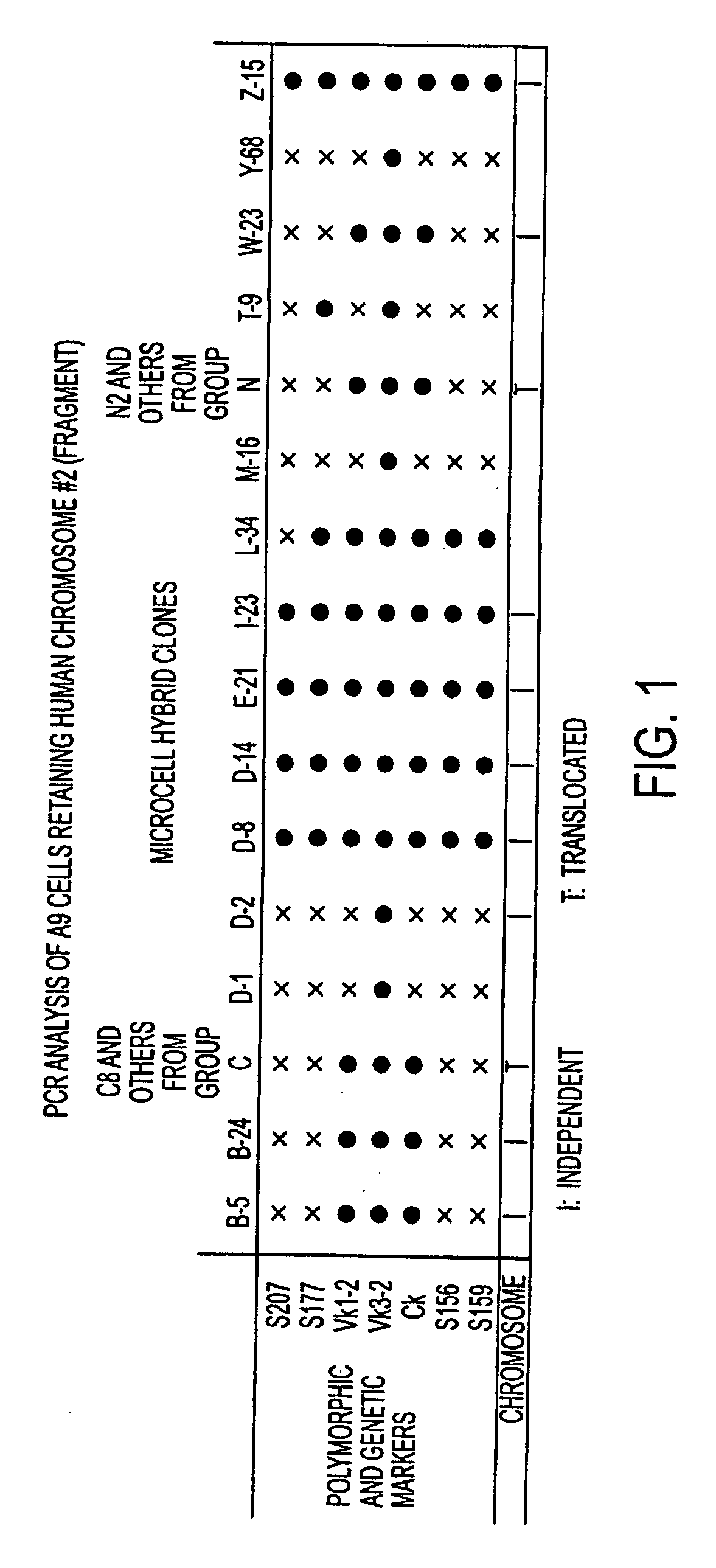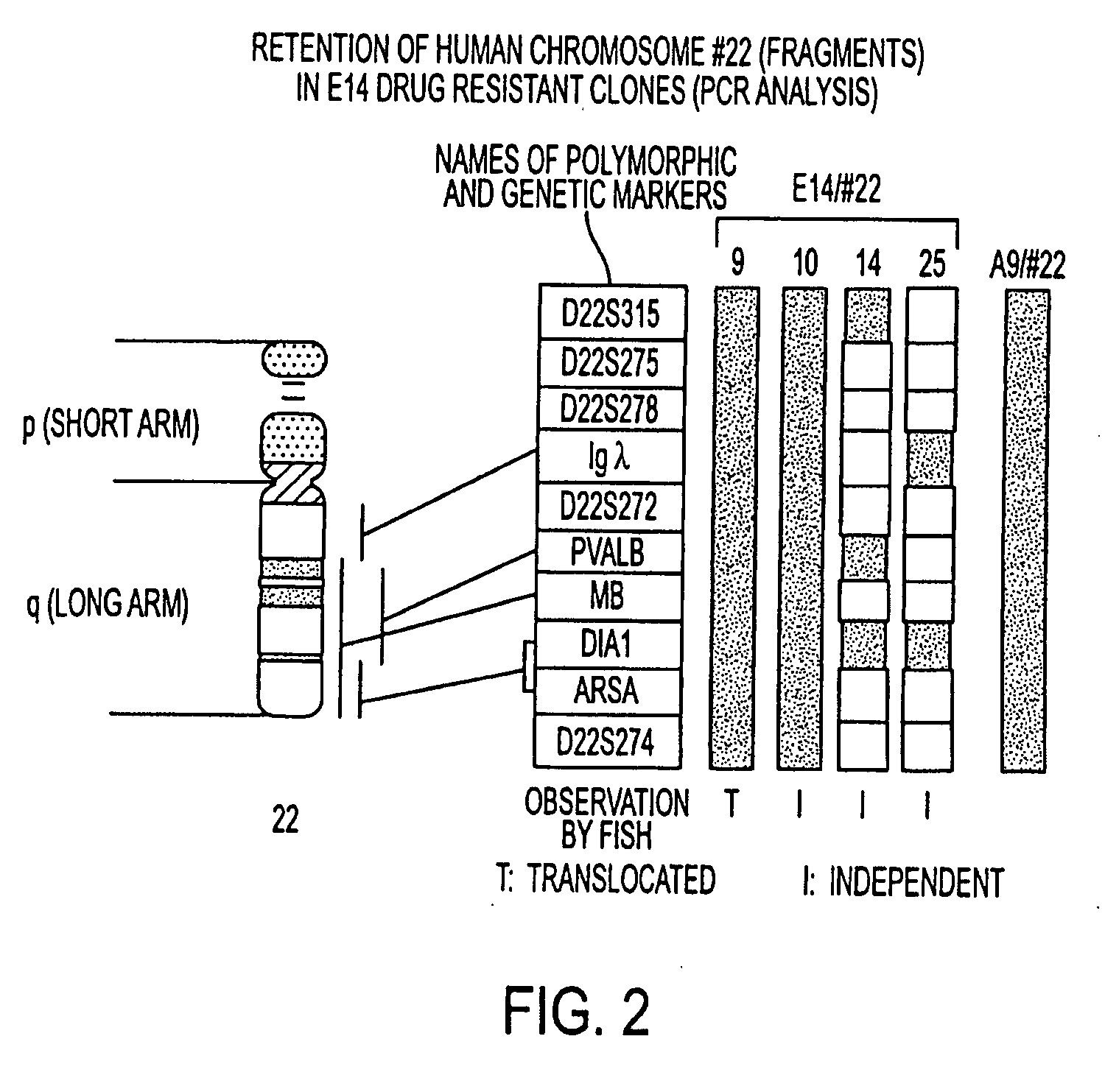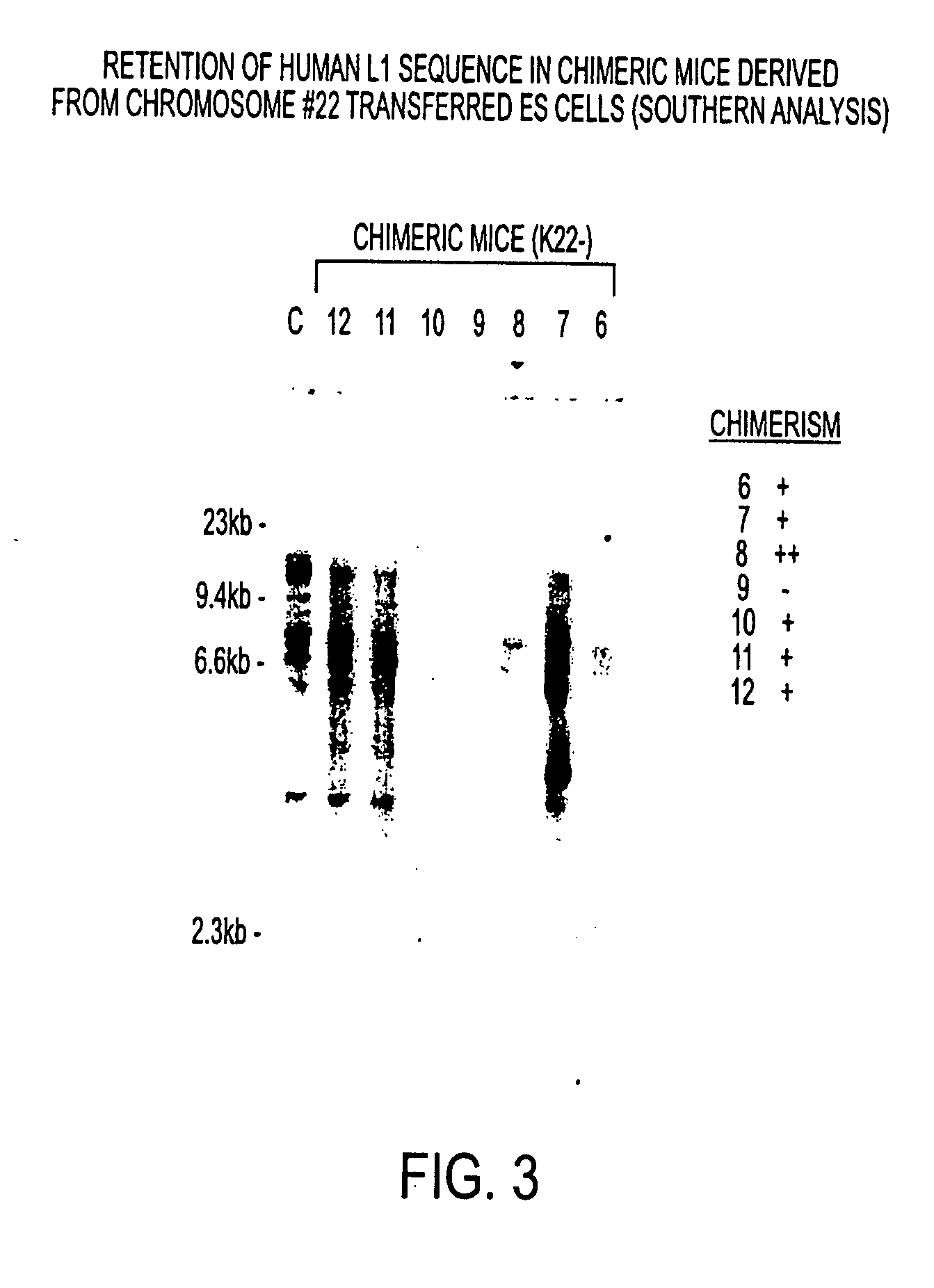Isolation of a rearranged human immunoglobulin gene from a chimeric mouse and recombinant production of the encoded immunoglobulin
a technology of immunoglobulin and mouse, which is applied in the field of chimeric nonhuman animals, can solve the problems of inability to use conventional techniques, and achieve the effect of stable retention of chromosomes or fragments
- Summary
- Abstract
- Description
- Claims
- Application Information
AI Technical Summary
Benefits of technology
Problems solved by technology
Method used
Image
Examples
example 1
Production Of Chromosome Donor Cell Retaining Human Chromosome (Fragment) Labeled with G418 Resistance
[0153]Plasmid pSTneoB containing a G418 resistance gene (Katoh et al., Cell Struct. Funct., 12:575, 1987; Japanese Collection of Research Biologicals (JCRB), Deposit Number: VE 039) was linearized with restriction enzyme SalI (TAKARA SHUZO CO., LTD.) and introduced into human normal fibroblast cell HFL-1 (obtained from RIKEN Cell Bank, RCB0251). The HFL-1 cells were treated with trypsin and suspended in Dulbecco's phosphate-buffered saline (PBS) at a concentration of 5×106 cells / ml, followed by electroporation using a Gene Pulser (Bio-Rad Laboratories, Inc.) in the presence of 10 μg of DNA (Ishida et al., “Cell Technology Experiment Procedure Manual”, published by Kodansha, 1992). A voltage of 1000 V was applied at a capacitance of 25 μF with an Electroporation Cell of 4 mm in length (165-2088, Bio-Rad Laboratories, Inc.) at room temperature. The electroporated cells were inoculated...
example 2
Transfer of Human Chromosome #22 into Mouse ES Cells by Microcell Fusion
[0160]The mouse A9 cell clones retaining human chromosome #22 (hereinafter referred to as “A9 / #22”) from Example 1 were used as chromosome donor cells. Mouse ES cell line E14 (obtained from Martin L. Hooper; Hooper et al., Nature, 326:292, 1987) was used as a chromosome recipient cell. E14 cells were cultured in accordance with the method described in Aizawa Shinichi, “Biomanual Series 8, Gene Targeting”, published by Yodosha, 1995 and G418 resistant STO cell line (obtained from Prof. Kondo Hisato, Osaka University) treated with mitomycin C (Sigma) was used as a feeder cell. In the first step, microcells were prepared from about 108 cells of A9 / #22 in accordance with the method reported by Shimizu et al. “Cell Technology Handbook”, published by Yodosha, 1992. The total amount of the resulting microcells were suspended in 5 ml of DMEM. About 107 cells of E14 were dispersed with trypsin and washed three times with...
example 3
Production of Chimeric Mice from the ES Cells Retaining Human Chromosome #22
[0168]General procedures for obtaining mouse embryos, cultivation, injection of the ES cells into the embryos, transplantation to the uteri of foster mothers were carried out in accordance with the method described in Aizawa Shinichi, “Biomanual Series 8, Gene Targeting”, published by Yodosha, 1995. The cells in a frozen stock of the G418 resistant ES clone E14 / #22-9 which was confirmed to retain human chromosome #22 were thawed, started to culture and injected into blastcyst-stage embryos obtained by mating a C57BL / 6×C3H F1 female mouse (CREA JAPAN, INC.) with a C3H male mouse (CREA JAPAN, INC.); the injection rate was 10-15 cells per embryo. Two and half days after a foster mother [ICR or MCH (ICR)] mouse (CREA JAPAN, INC) was subjected to a pseudopregnant treatment, about ten of the ES cell-injected embryos were transplanted to each side of the uterus of the foster mother. The results are shown in Table 1...
PUM
| Property | Measurement | Unit |
|---|---|---|
| Electric potential / voltage | aaaaa | aaaaa |
| Energy | aaaaa | aaaaa |
| Electric dipole moment | aaaaa | aaaaa |
Abstract
Description
Claims
Application Information
 Login to View More
Login to View More - R&D
- Intellectual Property
- Life Sciences
- Materials
- Tech Scout
- Unparalleled Data Quality
- Higher Quality Content
- 60% Fewer Hallucinations
Browse by: Latest US Patents, China's latest patents, Technical Efficacy Thesaurus, Application Domain, Technology Topic, Popular Technical Reports.
© 2025 PatSnap. All rights reserved.Legal|Privacy policy|Modern Slavery Act Transparency Statement|Sitemap|About US| Contact US: help@patsnap.com



